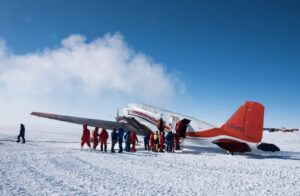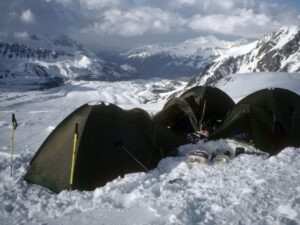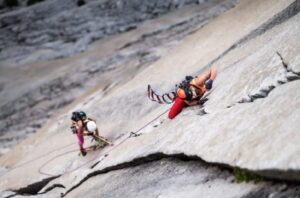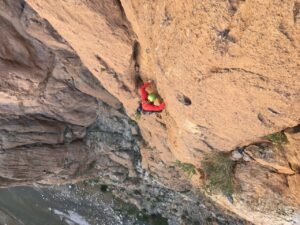Once upon an earlier time, I wanted to meet real-life headhunters (where I live, there’s only the corporate variety), so, finding myself in Borneo, I boarded a motorized dugout canoe and traveled down a series of rivers until I reached an Iban longhouse.
The rivers had provided me with relief from the heat and humidity, the former of which was in the high 90s and the latter of which seemed to be in the high 100s. I felt like my bones were melting and becoming butter.
“You seem to be hot,” an Iban man said to me through Bakhri, my guide and translator, shortly after I arrived at the longhouse.
“Yes, very hot,” I replied, mopping my brow.
“We’re having a cold spell,” the man told me. Whether or not this was meant as a joke, I never found out.
Soon I was seated on a mat next to the chief, a bronze-skinned, middle-aged man whose arms were embellished with a circuitry of blue-black tattoos.
I asked him whether there were any Japanese heads in the longhouse. For Japan had invaded Borneo during World War II, and the government initiated a “10 Bob a Knob” program, whereby the Iban received 10 shillings for every Japanese head they brought in.
The chief shook his own head in response to my question. Then I asked him if the Iban still took heads, and he shook his head again. The Iban didn’t take heads anymore, he said.
“Not even to stay in practice?” I asked.
He shook his head yet again, then added that, in his father’s time, the most popular guy with the girls was the one who took the most heads. If a man didn’t participate in headhunting raids, he probably would end up a bachelor. But nowadays there were fewer bloodthirsty ways to get ahead (so to speak). A young man could go to work in the oilfields of Brunei and bring back a sewing machine for the girl who interested him.
I asked an attractive teenage girl seated near me which she would prefer, a sewing machine or a freshly plucked human head. “No want head!” she shouted in broken English as if she thought I was coming on to her.
The chief realized my dilemma. He brought out a cell phone, probably the first device of this sort I’d ever seen (in certain respects, I’m more backward than ex-headhunters), called up another longhouse, and asked if they had any old World War II heads. As it happened, the other longhouse had quite a few of them.
So it was that I climbed into the canoe with Bakhri, and we traveled to that
other longhouse. There the chief happily showed me a rattan bag of “knobs” that belonged to former members of the Japanese Imperial Army. One of these skulls had a pair of spectacles affixed to its hollow sockets.
After wandering around a bit in the local rainforest, but only a bit because
the humidity was melting me, I returned to the longhouse and looked at the bag of skulls again. This time, I noticed an interesting fungus growing on one of them and — being a mycologist — I began scraping it off so I could study it and perhaps identify it.
“Don’t do that!” shouted Bakhri.
“Because the skull is a ritual object?” I asked him. For I’d read somewhere that skulls taken in battle could ward off evil spirits and likewise improve the yield of rice fields.
“Tourists take pictures of these heads,” Bakhri said. “They won’t want to take a picture of one that’s got a big scrape mark on it. If they see it, maybe they’ll complain to the chief…”
Not long after he said this, a boatload of tourists did in fact arrive at the longhouse, and I soon began hearing the whizz-clicks of cameras. All at once, an unpleasant thought occurred to me — namely, that I was a tourist myself.






